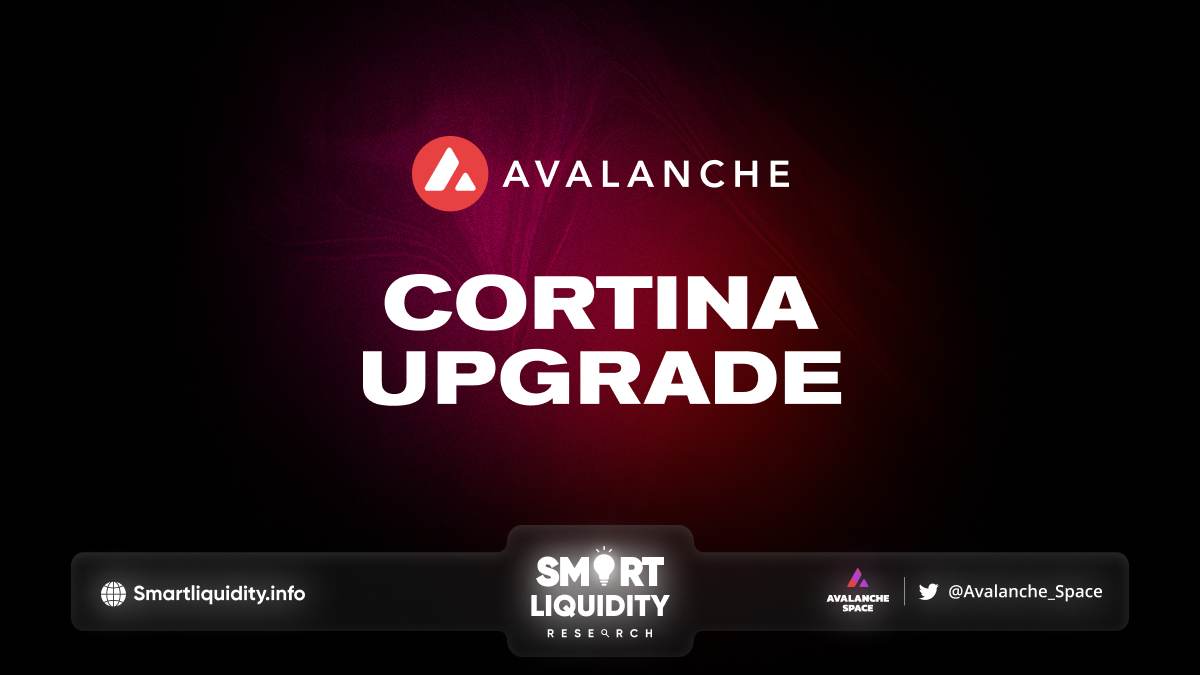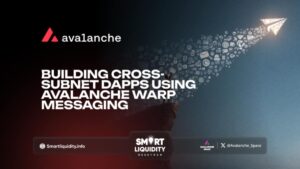The Avalanche Cortina Upgrade


The Avalanche Cortina Upgrade includes protocol optimizations that are not compatible with AvalancheGo versions < v1.10.0.
The pre-release code for the Avalanche Cortina Upgrade will be published on Monday, March 27th, 2023, and will activate at 11 A.M. ET (3 P.M. UTC) on Thursday, March 30th. It will only work on Fuji, and will exit on startup if run on Mainnet.
Cortina Upgrade protocol improvements are incompatible with AvalancheGo versions < 1.10.0. Fuji nodes must update to AvalancheGo >= v1.10.0 before activation. Mainnet nodes should wait for [email protected].
X-Chain Linearization
The X-Chain runs Avalanche Consensus, a leaderless, DAG-based protocol that allows for the concurrent processing of non-conflicting UTXOs at high throughput without establishing a total ordering of activity. The C-Chain, P-Chain, and all Avalanche Subnets, on the other hand, run Snowman++, a chain-based, totally-ordered protocol that sequences conflict-free block production without time-based slots over thousands of participants.
The existing semantics of the X-Chain prevent or significantly complicate the integration of Avalanche Warp Messaging (AWM), the addition of complex X-Chain transactions, the enablement of state syncing, and broad exchange support. AWM integration requires Snowman++ to verify the BLS Multi-Signature of incoming messages from other Avalanche Subnets. The X-Chain cannot interact with Subnets due to its DAG-based consensus.
X-Chain nodes process vertices in various orders due to partial ordering. This makes interacting with shared on-chain objects, such as exchanges, and state syncing to the tip of the network a non-trivial and error-prone problem. Legacy exchanges are unable to integrate with the current form due to the non-deterministic ordering of on-chain activity.
Cortina migrates the X-Chain to run Snowman++ consensus and operate as a totally-ordered blockchain in a process called “linearization”. When linearization begins, it will no longer be possible to add additional vertices to the DAG. Linearization is seamless and should not result in any downtime on the P-Chain, C-Chain, or any Subnets. The X-Chain will, however, be briefly inaccessible.
This migration enables Avalanche Warp Messaging integration, transaction types, state synchronization, and X-Chain trades for different Elastic Subnet coins. Migrating to a single consensus engine across the entire Avalanche Network, which reduces the size of the trusted computing base and increases the leverage of existing R&D efforts, will enable faster development and more broadly-applicable innovation.
Migration guide for integrators here that highlights all changes to the AvalancheGo APIs required to support Cortina.
Batched Delegator Rewards
Validators have the ability to charge a service fee to anyone that delegates to their node. If a validator is online for 80% of a delegation period, they receive a% of the reward. The P-Chain distributes this fee as a separate UTXO per delegation period.
Cortina has changed the way delegation fees are distributed for validators that begin staking after the Cortina Activation. Instead of sending a fee UTXO for each successful delegation period, fees are now batched during the node’s entire validation period and distributed when it is unstaked.
Cortina increases the C-Chain block gas limit to 15M gas. To avoid increasing the amount of resources required to validate the Primary Network, the gas target will remain unchanged at 15M gas per 10s.
About Avalanche
Avalanche network is the blockchain industry’s quickest smart contracts platform digital asset. Avalanche is blazingly fast, low cost, echo-friendly Any smart contract-enabled application can outperform its competition by deploying on Avalanche.
SOURCE: https://medium.com/avalancheavax/cortina-x-chain-linearization-a1d9305553f6




